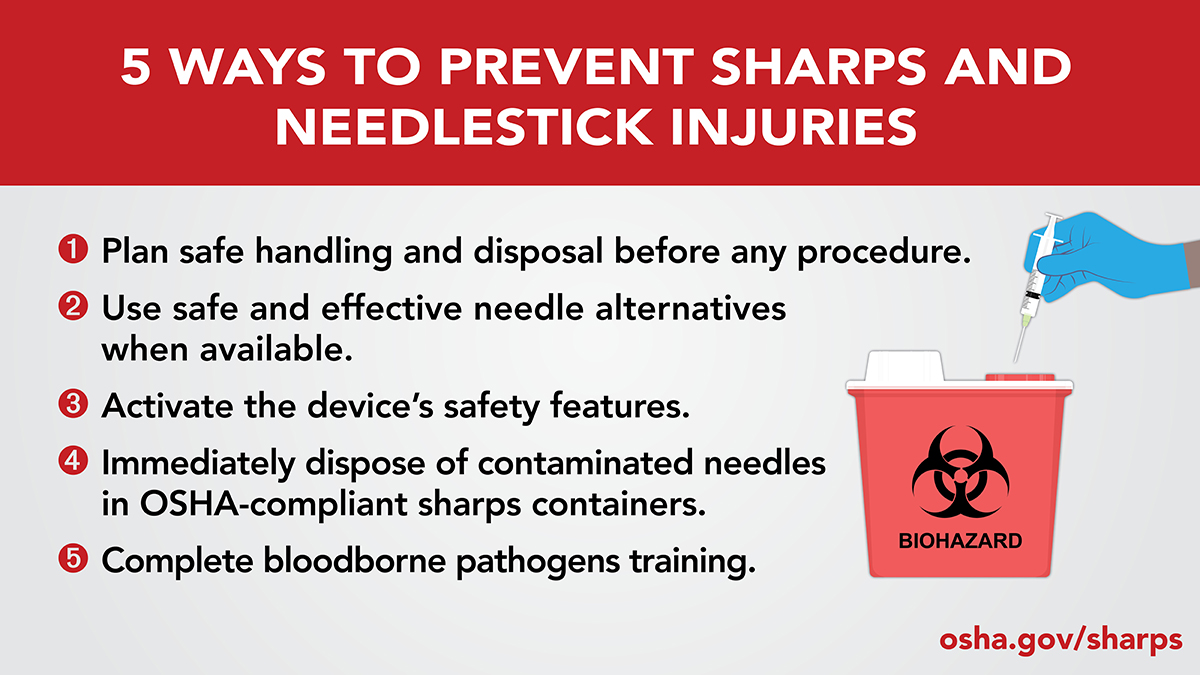Bloodborne Pathogens and Needlestick Prevention
Overview
What are bloodborne pathogens?
Bloodborne pathogens are infectious microorganisms in human blood that can cause disease in humans. These pathogens include, but are not limited to, hepatitis B (HBV), hepatitis C (HCV) and human immunodeficiency virus (HIV). Needlesticks and other sharps-related injuries may expose workers to bloodborne pathogens. Workers in many occupations, including first responders, housekeeping personnel in some industries, nurses and other healthcare personnel, all may be at risk for exposure to bloodborne pathogens.
What can be done to control exposure to bloodborne pathogens?
In order to reduce or eliminate the hazards of occupational exposure to bloodborne pathogens, an employer must implement an exposure control plan for the worksite with details on employee protection measures. The plan must also describe how an employer will use engineering and work practice controls, personal protective clothing and equipment, employee training, medical surveillance, hepatitis B vaccinations, and other provisions as required by OSHA's Bloodborne Pathogens Standard (29 CFR 1910.1030). Engineering controls are the primary means of eliminating or minimizing employee exposure and include the use of safer medical devices, such as needleless devices, shielded needle devices, and plastic capillary tubes.

General Guidance
Provides information on the revised standard.
Enforcement
Highlights directives and letters of interpretation related to bloodborne pathogens and needlestick prevention.
Hazard Recognition
Provides references that aid in recognizing workplace hazards associated with bloodborne pathogens.
Evaluating and Controlling Exposure
Provides information for evaluating and controlling bloodborne pathogens and needlestick hazards.
Standards
Bloodborne pathogens and needlesticks are addressed in specific OSHA standards for general industry.
Additional Resources
Provides links and references to additional resources related to bloodborne pathogens and needlestick prevention.
What to do if you are stuck by a needle:
If you are stuck by a needle or other sharp or get blood or other potentially infectious materials in your eyes, nose, mouth, or on broken skin, immediately flood the exposed area with water and clean any wound with soap and water or a skin disinfectant if available. Report this immediately to your employer and seek immediate medical attention.
CDC: Emergency Needlestick Information also provides immediate access to treatment protocols following blood exposures involving HIV, HBV and HCV, including the Clinicians' Post Exposure Prophylaxis Hotline (PEPline) at 1-888-448-4911.
Highlights
Frequently asked questions about bloodborne pathogen hazards

